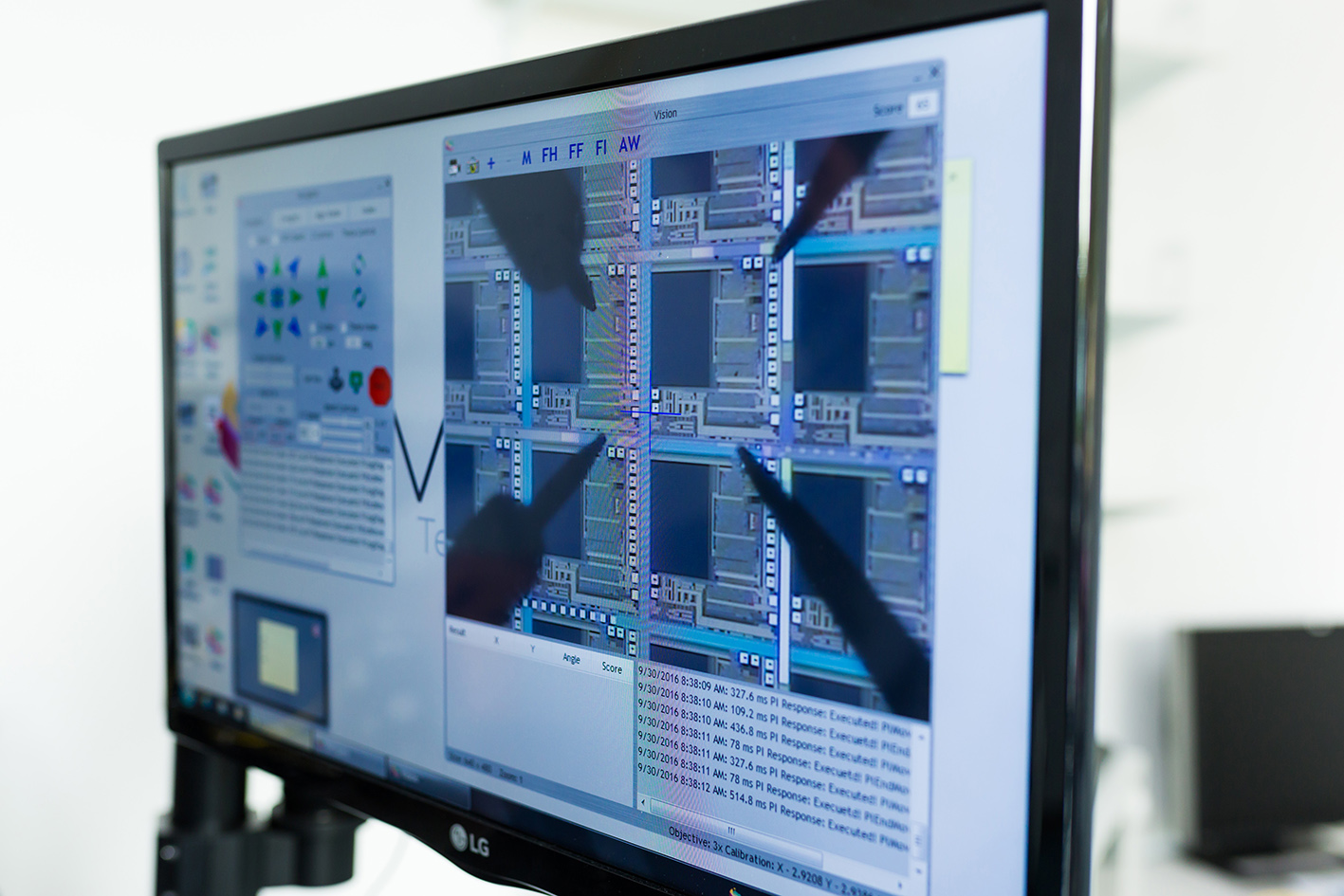Dr. Lange, how does your field of work support future developments in electronics?
André Lange: Our work is aimed at supporting the design of safety-critical and/or durable electronics. This is all the more important when new manufacturing technologies come into play, such as in automotive electronics, or when conventional approaches are replaced, such as intelligent sensor technology in industrial automation. With our help, it will be possible to realistically map the aging of electronics over their useful life, even for ever-smaller systems and new manufacturing technologies. This paves the way for the development of innovative ICs with a high degree of reliability.
Who can collaborate with you, and to what end?
André Lange: We generally collaborate with foundries (semiconductor fabricators) and IC designers, but we also offer our services to IDMs (integrated device manufacturers) and end users.
The aim of our work is to support the design of safety-critical and/or long-lasting electronics. Applications of this sort can be found in a wide range of fields, such as automotive electronics, industrial automation, or the aerospace industry.
More and more end users are keen to know which semiconductor technologies are used in the products they buy, and just how reliable they are. Accordingly, suppliers are required to provide evidence in this regard. IC designers have to document the reliability of their designs, and in order to do so they need information from the foundries about the semiconductor technologies they use. In this context, we build bridges between the various players.
What do companies stand to gain from collaborating with you?
André Lange: Our focus is on aging models for integrated transistors that can be used to study the long-term behavior of ICs in simulations. The creation of these (mathematical) models depends on reliability measurements performed on test structures on wafers. Building on this foundation, the models must then be defined and parameterized according to customer requirements and implemented in the customer’s design environment (development software for integrated circuits). We offer customers the full range, or just certain parts of it.
The way the industry currently works is that the various IC design environments are equipped with their own aging models, with the result that there is no consistency. This is the gap we aim to fill, as our aging models support all the major design environments equally. We offer IC designers aging models tailored to their particular needs, for example with regard to their degree of precision. For end users, the most important aspect is our overarching knowledge of the various fields involved.
How do collaborations come about?
André Lange: We form connections in all sorts of different ways. Some of our customers have been with us for a long time. Others find us at events such as trade fairs. We have also been approached via our website.
Can you give us any concrete examples of successful collaborations?
André Lange: We have successfully applied our knowledge in numerous customer projects involving reliability measurements, creation and parameterization of models or implementation of design environments. We have also successfully investigated reliability aspects from the user perspective. In all of these projects, depending on the initial conditions, we were able to create results, which extend a customer's existing range of offerings, give them an advantage in knowledge, or confirm their achievements by means of external evaluation.
We’d like to end on a personal note: what motivates you in your work?
André Lange: I’m particularly particularly drawn to the interdisciplinary nature of what we do. In our line of work, we deal with questions that have so far always been addressed by various different and largely separate areas within companies. We are familiar with the different requirements and ways of thinking of these areas, and form connections among them.

